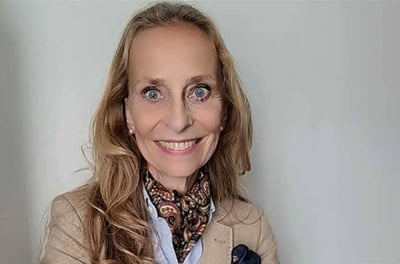On the Frontlines: Stakeholder Relationships
Blogs Ursula Schmidt, PHD, CCEP-I May 12, 2025

In this ever-evolving risk landscape, maintaining authenticity in our stakeholder relationships isn’t simply a “nice to have,” but a strategic necessity that is essential to the future of the profession.
Navigating an Evolving Risk Landscape. With the rise in high-profile corporate scandals, ever-broadening regulation, cyber risks, artificial intelligence, and hybrid work systems, the scope of internal audit has expanded greatly.
We are no longer seen simply as compliance watchdogs. Increasingly, internal auditors are looked to for guidance and consultancy services, as trusted advisors and strategic partners to the organization. With this shift in perception and expectation comes a realignment of the skills that practitioners need most to succeed. Practitioners today must master effective relationship and communication skills at a deeper level to maximize their strategic value and leadership within the organization. Today, the success and future of this profession depends not only on what we do, but on how we engage with those around us.
Understanding Our Shifting Responsibilities. In understanding the key responsibilities practitioners have to an organization’s stakeholders, The IIA’s Global Internal Audit Standards are a good place to start.
The updated Standards emphasize that successful stakeholder relationships are a critical part of a high-quality internal audit function and recommend practitioners prioritize:
- Building and maintaining trust.
- Fostering open and honest communication.
- Engaging in ongoing and informal dialogue.
- Effectively measuring the quality of these relationships on a consistent basis.
The CAE is essential in helping practitioners navigate these shifts effectively and is responsible for guiding the function in how they approach effective relationship-building. In this context, what might have once been considered optional soft skills become critical factors in ensuring successful relationships within the organization.
Navigating New and Evolving Challenges. A common challenge in managing stakeholder relationships is a misperception of who qualifies as a stakeholder. We often think of stakeholders as members of senior management or the audit committee. In fact, anyone in or around an organization can become a key stakeholder. This includes internal colleagues, all employees engaged during audit activities, external regulators, customers, suppliers, analysts, banks, and more.
Each relationship brings its own set of expectations and unique dynamics. Along the way, some common challenges that may arise include:
- Loss of trust rooted in a breakdown in communication.
- Resistance or a lack of cooperation from the client or stakeholders.
- Cultural misunderstandings or differences, including distinctions in formalities or standards of professional behavior.
- Misalignment in how we view our roles and responsibilities versus how stakeholders perceive us.
- Language barriers rooted in different professional jargon, terminology, or foreign languages.
Most people don’t like being audited — this alone creates ample room for tension. When you add in the myriad challenges noted above, it’s clear internal auditors must manage stakeholder relationships with great intention and care.
Leading with Authenticity. So, how do we strengthen and maintain stakeholder relationships in a meaningful way? It starts with authentic leadership. Put simply, authentic leadership is about building long-term, trust-based stakeholder engagement. Authentic leadership is based on relational engagement, rather than one-off, transactional interactions, and it prioritizes honesty, empathy, and purpose-driven behaviors in pursuit of mutually beneficial outcomes and high ethical standards.
Above all, authentic leadership is grounded in integrity — a value that aligns strongly with the core values of this profession.
Putting Authentic Leadership into Practice. Actively exercising authentic leadership behaviors requires meaningful self-reflection, both internally and in the context of professional relationships. This means intentionally seeking feedback and reflecting on professional values, behaviors, and leadership approaches.
I often encourage practitioners to ponder questions such as, “What are my core business values?” and “How do I lead, and why?” It’s equally important to reassess your relationships with stakeholders, considering your mutual expectations and the perceptions you each have about your roles.
Leverage these insights to more thoughtfully explore how stakeholder challenges have emerged in the past and whether your own behaviors, assumptions, or goals might be getting in the way. This self-assessment can illuminate new ways to navigate difficult situations more effectively.
In a risk environment where change is the only constant, business relationships rooted in trust and authenticity become our most valuable assets. For internal auditors, this means embracing our own sense of adaptability and the evolving nature of our work, not only as risk and compliance professionals but as strategic partners who lead with integrity. The future may be fast-evolving and unlike what we’ve grown used to, but by leading with authenticity, we can help shape a stronger and more positive future for the organizations we serve.
Ursula Schmidt is a presenter at the The IIA's 2025 International Conference, which takes place July 14-16 in Toronto.


